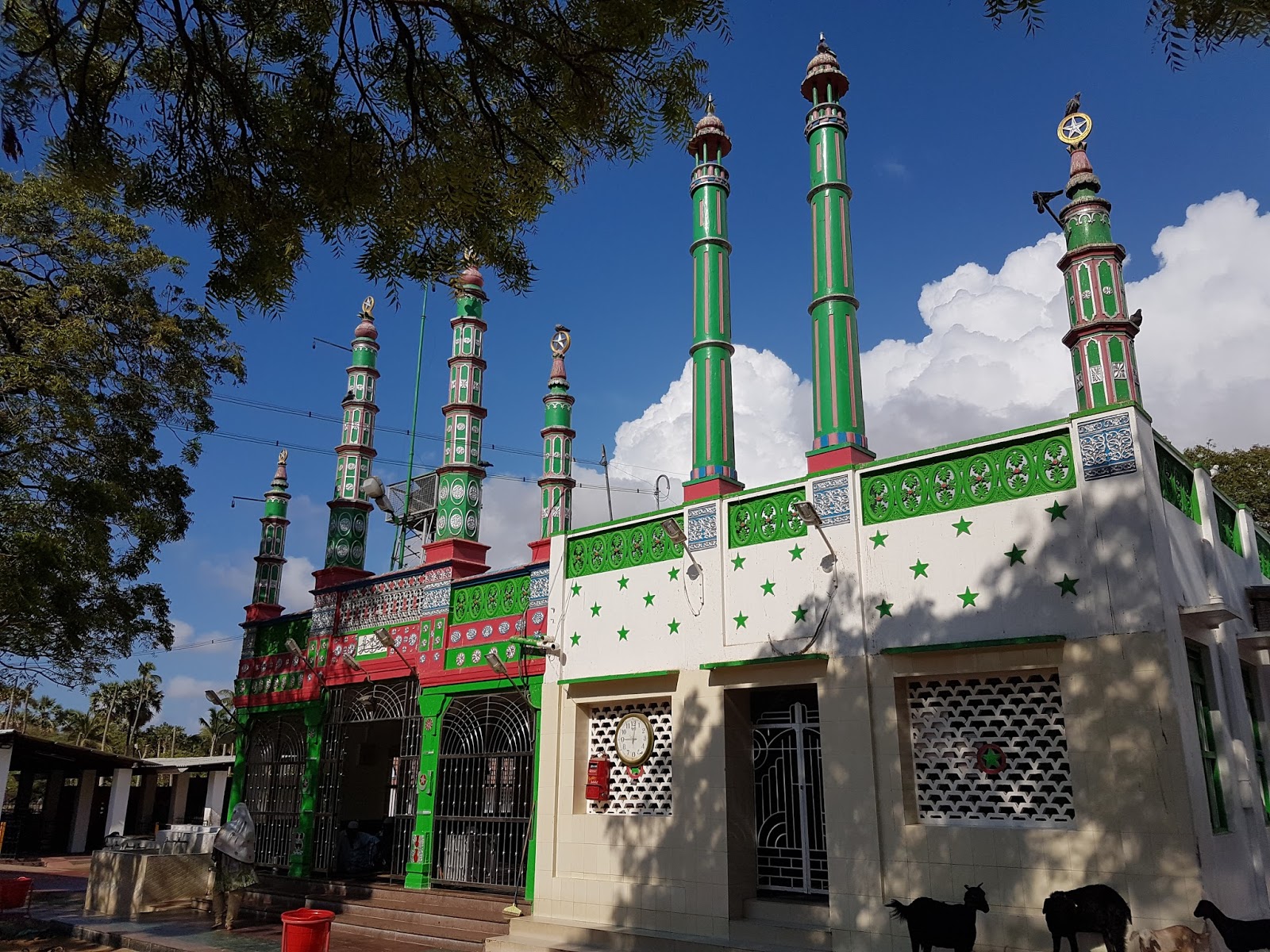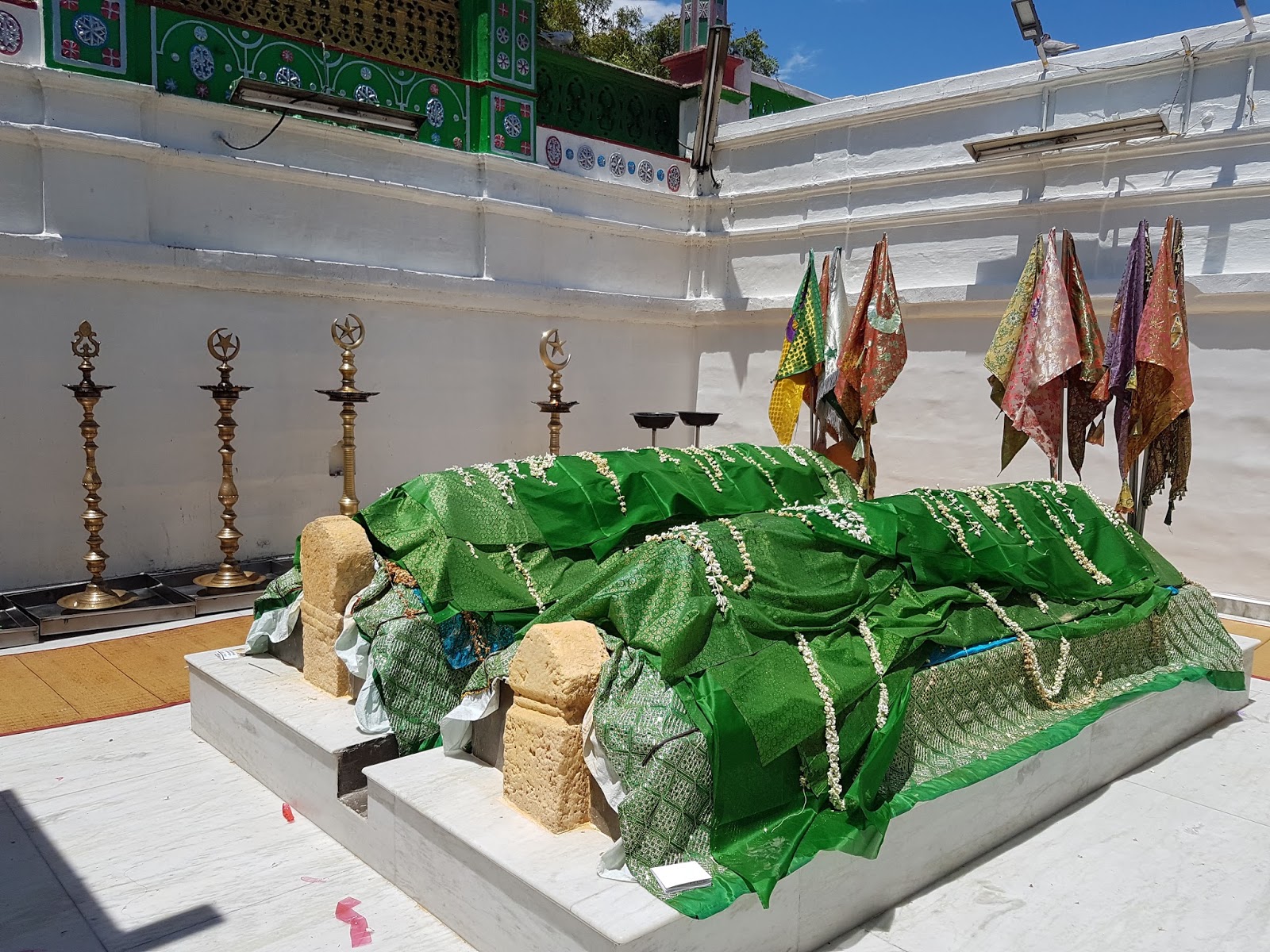


Saiyad Ali Fāttimā (16th century) was a missionary and ascetic venerated in southern India along with her husband Ṣēk Muhammadu. Little written information exists about the saint, as her life comes down through oral history and is inextricably intertwined with the folklore and customs of her shrine. According to tradition, she and her husband, possibly along with other missionaries, departed an Arab country to preach in India, but after visiting locations on the eastern coast, they got caught in a storm in the Bay of Bengal. They had to land at the southern point of India, near the town of Kanyakumari, which had been under the rule of the Hindu Nāyaks of Madurai and Vijayanagara Empire, in what is now the Tirunelveli district of Tamilnadu. The stranded missionaries headed inland through the jungle to the Nambiyar river, where the pair stayed, taking up dedication to prayer and spiritual contemplation. When Ṣēk Muhammadu died by snakebite, Saiyad Ali Fāttimā continued her meditative and pastoral work. At her death sometime after, she was buried besides her husband on the riverbanks. Travelers who had encountered the two considered them wise and worthy of respect, and Saiyad Ali Fāttimā particularly came to have a following in her life. It is said that she appeared to her devotees after her death in a dream, instructing them to construct a roofless dargāh, or shrine, over her and her husband’s graves so they would be exposed to the elements, as well as a mosque beside it. They built the original structure out of soil and palm leaves, and it came to be called Āttaṅkarai Pallivasal, “riverside mosque.”
Saiyad Ali Fāttimā and her husband became highly revered in the region, and despite their simple shrine’s relative remoteness, its devotion became widely known. The shrine is administered by hereditary male custodians of a dargāh, who are said to descend from the missionaries who attended the saints. Their familial name, Bijlī or Bijilī, is supposed to derive from “Bajjal,” their ancestors’ place of origin, although to where this refers, if it is not merely a back-formation of the name Bijlī itself, is not clear. The shrine was made more accessible when the current custodians installed paved roads and guest spaces, facilitating the voyage for pilgrims from all over southern India, especially Tamilnadu and Kerala. As the shrine is supported by the donations of devotees, the now year-long attendance also funds daily meals for the poor.

The height of Saiyad Ali Fāttimā’s veneration is her and her husband’s kantūri, or memorial feast, held on June 19 and 20. The day before, an elephant is bathed in preparation for the “sandalwood pot” procession. A decorated santanakkūṭu, or pot of sandalwood paste, is carried on an elephant along with a trail of devotees carrying pots in a miles-long march to the shrine from the nearest village, Pulimankulam. When the procession arrives, they cross over a white sheet and enter the gravesite with the santanakkūṭu. The sandalwood paste, a traditionally sacred and medicinal substance in South Asian religion, is smeared on the tombs as a sign of reverence. As the dargāh contains a female saint, women are exceptionally permitted within the shrine, and the sandalwood application, as well as the loud Qur’an recitals and giving of the fātiḥah, is completed before separate crowds of men and women.
Tradition attributes many miraculous events and characteristics to the shrine on account of Saiyad Ali Fāttimā’s barakah, or blessing from God. Devotees travel to the shrine seeking the saints’ intercession and relief to ailments, including snakebite (given her association with the fate), and local tradition recalls many occasions of her supposed intercession or intervention. The white sheet over which the procession crosses to enter the shrine is laid down by a washerman, as a washerman was believed to have initiated the practice in his family when Saiyad Ali Fāttimā interceded on his behalf on an issue. A miraculous narrative tells that when previous custodians had a building constructed of more stable material for the dargāh, a boulder nearly fell on the workers, until someone cried “Āttaṅkarai Nācchiyār Ammā!” (“Hallowed Lady Mother of the Riverside” in Tamil), diverting the boulder. The story is given as the origin of that epithet, and the matronly saint is also commonly called Ammā, Tāy (both meaning “mother”), Nāyaki (“lady,” “mistress”) and Fāttimā Bībī. Given the saint’s august reputation and the syncretic nature of her devotion, the shrine draws visitation and devotion from Muslims and non-Muslims alike.
I, II: Murugan, Ila. Tamilnadu Tourism. Blogspot, 22 May 2017, https://tamilnadu-favtourism.blogspot.com/2017/05/athankarai-pallivasal-radhapuram.html.
Bijili, Akbar. Faith of all religions is " ATHANGARAI PALLIVASAL '' in Tirunelveli District. Rev. of Athankarai Pallivasal. Tripadvisor, 12 Nov. 2018, https://www.tripadvisor.com/ShowUserReviews-g1584851-d4089167-r633065256-Athankarai_Pallivasal-Tirunelveli_Tirunelveli_District_Tamil_Nadu.html.
Jan, M. Ashraf. “The Emergence and Growth of Select Dargahs in Tamil Nadu from 13th century A.D. to 20th century A.D.” Madurai Kamaraj University, 7 Mar. 2009, pp. 88, 107, 113, 150–151, 159, 188–189, 224, 237, http://shodhganga.inflibnet.ac.in:8080/jspui/handle/10603/139559.
Mujtaba, Syed Ali. “Fathimasa Bibi: Meet this woman Sufi Saint of India.” Muslim Mirror, 20 Jan. 2018, http://muslimmirror.com/eng/fathimasa-bibi-meet-woman-sufi-saint-india/.
Murugan, Ila. “Athankarai Pallivasal, Radhapuram, Thirunelveli.” Tamilnadu Tourism. Blogspot, 22 May 2017, https://tamilnadu-favtourism.blogspot.com/2017/05/athankarai-pallivasal-radhapuram.html.
“நெல்லை ஆற்றங்கரை நாயகி தாய் செய்யது அலி பாத்திமா (ரழி)!” [Mother o the Nellai Riverside, Syed Ali Fathima (RA)]. Dinamalar Nellai, Dinamalar, 19 Jun. 2019, http://www.dinamalarnellai.com/web/news/72033.
Syed Ali Fathima • Syedali Fathima • Syeda Ali Fathima • Bibi Fathima • Bibi Fathima (SA) • Fathimasa Bibi • Shaykh Muhammad Awliya • Sheikh Mahomed Auliya
South Asia • Sufi • Mystic.